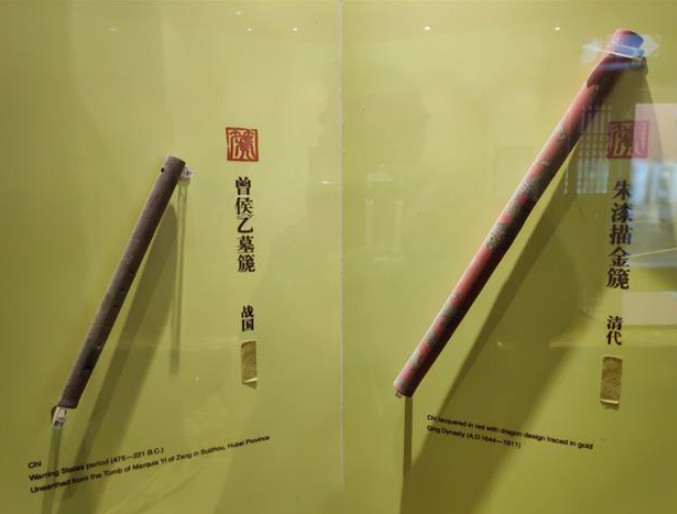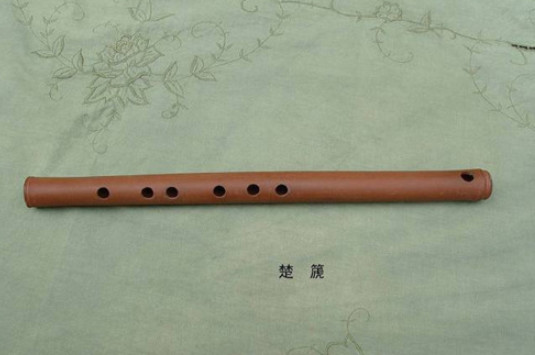Origin and Application of Chi
148 views · Organized by 天井 on 2022-02-15
Air blowing instrument. An ancient Chinese horizontal blowing bamboo wind instrument.
According to the records of "Zhou Li·Zhengxuan Notes" and Chen Yang's "Book of Music", they all say that the chi is a kind of horizontal blowing bamboo wind instrument with 6 holes (including the upper outlet hole) and the bottom end closed. Judging from the two horizontal bamboo wind instruments unearthed from the tomb of Marquis Yi of Zeng at the beginning of the Warring States Period, they are both similar in characteristics to the chi described in the literature, but different from the flute. Therefore, in the Han Dynasty at the latest, Chi and Di should be the same musical instruments with similar pronunciation but different shapes.
Chi Yuan is a Chinese folk musical instrument. As early as the Zhou Dynasty, it was often played together with Xun. During the Warring States Period, as a member of a large-scale court band, it played with chimes, chimes, drums, xiao (panpipes), sheng, and se, etc. during worship to gods or feasts. The Xianghe song band of the Han and Wei Dynasties also used it sometimes. During the Six Dynasties, with the rise of Qing Shang music, it became the main accompaniment instrument of Wu Sheng. During the Sui and Tang Dynasties, it was a member of the most artistic Qingle band at that time. After the Song Dynasty, it was gradually lost because it was mainly used for court music.
The performance of the chi can be seen from the sound measurement results of the chi copied from the tomb of Zeng Houyi. Using the simplest fingering method, 6 tones can be played, that is, a complete pentatonic scale plus a changed tone. According to literature records, the Chi in Song and Ming Dynasties used the half-hole fingering method to blow the full twelve laws. Whether the Chi before the Song Dynasty used the half-hole fingering method is still difficult to determine because there is no conclusive proof.
According to the records of "Zhou Li·Zhengxuan Notes" and Chen Yang's "Book of Music", they all say that the chi is a kind of horizontal blowing bamboo wind instrument with 6 holes (including the upper outlet hole) and the bottom end closed. Judging from the two horizontal bamboo wind instruments unearthed from the tomb of Marquis Yi of Zeng at the beginning of the Warring States Period, they are both similar in characteristics to the chi described in the literature, but different from the flute. Therefore, in the Han Dynasty at the latest, Chi and Di should be the same musical instruments with similar pronunciation but different shapes.

Chi Yuan is a Chinese folk musical instrument. As early as the Zhou Dynasty, it was often played together with Xun. During the Warring States Period, as a member of a large-scale court band, it played with chimes, chimes, drums, xiao (panpipes), sheng, and se, etc. during worship to gods or feasts. The Xianghe song band of the Han and Wei Dynasties also used it sometimes. During the Six Dynasties, with the rise of Qing Shang music, it became the main accompaniment instrument of Wu Sheng. During the Sui and Tang Dynasties, it was a member of the most artistic Qingle band at that time. After the Song Dynasty, it was gradually lost because it was mainly used for court music.

The performance of the chi can be seen from the sound measurement results of the chi copied from the tomb of Zeng Houyi. Using the simplest fingering method, 6 tones can be played, that is, a complete pentatonic scale plus a changed tone. According to literature records, the Chi in Song and Ming Dynasties used the half-hole fingering method to blow the full twelve laws. Whether the Chi before the Song Dynasty used the half-hole fingering method is still difficult to determine because there is no conclusive proof.
Involving musical instruments
Chi (pinyin: Chí) is a musical instrument that blows and sings. An ancient Chinese horizontal blowing bamboo wind instrument. "Guang Ya" records that this instrument has eight holes, but "Zhou Li" records that this instrument has seven holes, and with the gradual decline of court music, this kind of Chinese musical instrument is very rare.
Guess you like
Organized by 九曲 on 2022-02-28
Chinese music is an important part of the splendid Chinese culture. Before the middle of the 19th century, it experienced three periods: ancient, medieval and modern. For thousands of years, it is famous for its colorful varieties and rich systems.
read >>
 渝公网安备 50010702504639号
渝公网安备 50010702504639号